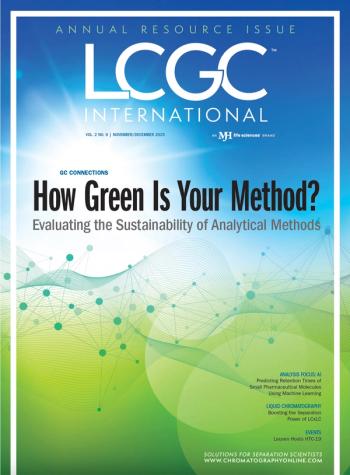
- The Application Notebook-03-02-2012
- Volume 0
- Issue 0
Fast Cap IC Determinations of Inorganic Anions and Cations in Drinking Water
Thermo Scientific Application Note
Fei Pang, Terri Christison and Khalil Divan, Thermo Fisher Scientific, Sunnyvale, California, USA.
The determination of common inorganic anions and cations in drinking water is important due to the toxicity of anions (e.g., fluoride, nitrite and nitrate) and secondary contaminants (e.g., chloride and sulfate) which can affect the water's aesthetics. Therefore, these secondary contaminants are monitored and primary contaminants regulated for compliance by the U.S. EPA and other agencies around the world.
Ion-exchange chromatographic determination of dissolved alkali and alkaline earth metals and ammonia in drinking water is another important application. Sodium is monitored under the U.S. EPA Safe Drinking Water Act, whereas ammonium is a required target analyte for wastewater discharge permits and is monitored in process wastewaters.
Figure 1
Capillary IC requires µL/min flow rates. Due to its low consumption of eluent, the system can remain on continuously, thereby eliminating the need for calibration prior to each use to provide a true walk-up system. The low flow rate leads to longer lifetime of consumables and smaller amount of waste, thereby reducing the overall cost of ownership.
Figure 2
Conditions and Sample Preparation
The experimental setup and the sample preparation procedures are described in Application Brief 133, Thermo Fisher Scientific, Inc. (formerly Dionex Corp.).
Conclusion
All anions were separated and eluted within 13 min. The peak area relative standard deviations for each analyte was 0.6% when 60 injections were evaluated within 24 h. Capillary Reagent-Free IC redefines the workflow for IC analysis of inorganic anions and cations, providing enhanced mass sensitivity and ease of use. It is a fast and accurate solution for routine characterization of different water samples.
Scan to receive complete application note.
Thermo Fisher Scientific, Inc. (formerly Dionex Corp.)
1228 Titan Way, P.O. Box 3603, Sunnyvale, CA 94088, USA
tel. (408) 737-0700, fax (408) 730-9403
Website:
Articles in this issue
almost 14 years ago
Faster, More Sensitive Determination of Carbamates in Drinking Wateralmost 14 years ago
Impurities in Wines by GC–MSalmost 14 years ago
Headspace-Cold Trap Sampling Fast GC–MS Analysis of VOCs in Wateralmost 14 years ago
Separation of Heat-Degraded Recombinant Human EPO Proteinalmost 14 years ago
Determination of Dyes in Fish Tissue by HPLC/UValmost 14 years ago
Light Scattering for the Masses Liposome Characterization by FFF-MALS-QELSNewsletter
Join the global community of analytical scientists who trust LCGC for insights on the latest techniques, trends, and expert solutions in chromatography.



